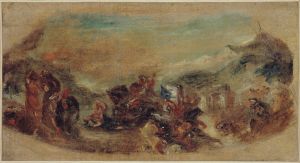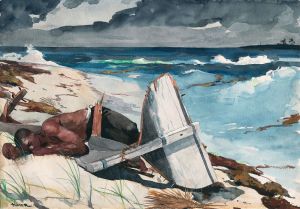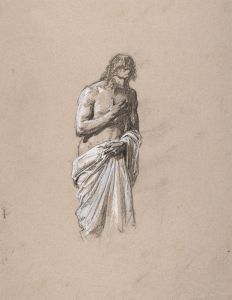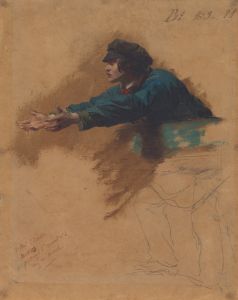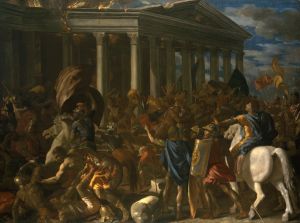
Ruines des Tuileries, 7 juillet 1871.
A hand-painted replica of Isidore Pils’s masterpiece Ruines des Tuileries, 7 juillet 1871., meticulously crafted by professional artists to capture the true essence of the original. Each piece is created with museum-quality canvas and rare mineral pigments, carefully painted by experienced artists with delicate brushstrokes and rich, layered colors to perfectly recreate the texture of the original artwork. Unlike machine-printed reproductions, this hand-painted version brings the painting to life, infused with the artist’s emotions and skill in every stroke. Whether for personal collection or home decoration, it instantly elevates the artistic atmosphere of any space.
"Ruines des Tuileries, 7 juillet 1871" is a painting by the French artist Isidore Pils, depicting the ruins of the Tuileries Palace in Paris after it was set ablaze during the events of the Paris Commune in 1871. Isidore Pils, born on July 19, 1813, in Paris, was a notable French painter known for his historical and genre scenes. He studied at the École des Beaux-Arts in Paris and was a student of François-Édouard Picot. Pils gained recognition for his works that often depicted significant historical events and scenes from everyday life.
The Tuileries Palace, originally built in the 16th century, was a royal and imperial palace located on the right bank of the River Seine. It served as a residence for French monarchs and was an important symbol of the French monarchy. However, during the Franco-Prussian War and the subsequent civil unrest, the palace became a target for the revolutionary forces of the Paris Commune.
The Paris Commune was a radical socialist and revolutionary government that briefly ruled Paris from March 18 to May 28, 1871. It arose in the wake of France's defeat in the Franco-Prussian War and the collapse of the Second French Empire. The Commune sought to implement various social and political reforms, but it faced opposition from the French government, which was based in Versailles.
On May 23, 1871, during the "Semaine Sanglante" or "Bloody Week," the Tuileries Palace was set on fire by the Communards as part of a broader strategy of destroying symbols of the old regime. The fire raged for two days, leaving the palace in ruins. The destruction of the Tuileries was part of a series of arson attacks that also targeted other significant buildings in Paris, including the Hôtel de Ville and the Palais de Justice.
Isidore Pils' painting captures the aftermath of this destruction. Completed on July 7, 1871, the artwork provides a visual record of the devastation. The painting shows the charred remains of the once-majestic palace, with its skeletal structure standing amidst the debris. Pils' work is notable for its attention to detail and its ability to convey the sense of loss and desolation that followed the Commune's downfall.
The painting serves as both a historical document and a work of art, reflecting the turbulent period in French history and the impact of the Commune on the city of Paris. It is an example of Pils' ability to capture historical events with both accuracy and emotional depth. The ruins of the Tuileries Palace remained a poignant reminder of the Commune until the site was cleared in the late 19th century to make way for the expansion of the Louvre Museum.
Today, "Ruines des Tuileries, 7 juillet 1871" is appreciated not only for its artistic merit but also for its historical significance, offering insight into a pivotal moment in French history.





